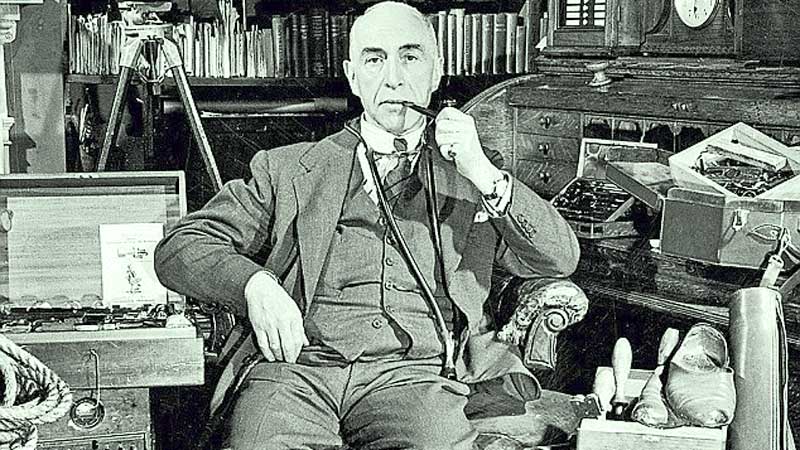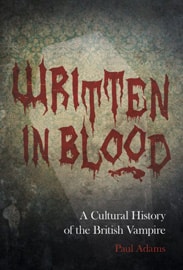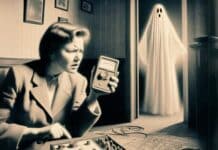Was Harry Price a fraudulent ghost hunter? PAUL ADAMS delves into the long debated paranormal topic.

Harry Price (1881-1948), regarded in recent times as ‘the father of modern ghost hunting’ was many things during the course of his colourful and eventful life: numismatist, photographer, bibliophile, motoring enthusiast, amateur conjuror, published author, psychical researcher, even a churchwarden. But was he a fake?
This blunt and damming label fell about Price’s shoulders in the mid-1950s when his carefully crafted reputation as an intrepid investigator of the paranormal was at its absolute nadir, a surprising turn of face for the man who arguably throughout the inter-war years had been the people’s ghost hunter, a high-profile researcher who filled newspaper columns and book pages with accounts of his researches into the twilight world of hauntings, poltergeists, mediumship and similar mysterious phenomena.
But less than a year after his death from a sudden heart attack at his home in Pulborough, West Sussex, on 29 March 1948, Charles Sutton, a former Fleet Street reporter, claimed he had caught Price several years before pretending to be a poltergeist during a visit to Borley Rectory, the scene of the ghost hunter’s most famous case, and it was to prove the beginning of an avalanche of criticism that in 1956 culminated in the publication of The Haunting of Borley Rectory, a devastating book-length report that charged Price with misrepresentation, exaggeration, the forgery of evidence, and out and out dishonesty in practically all aspects of his presentation and publicity of Borley.
As two of its three authors were former associates from the ranks of the British paranormal community, it seemed inescapable that a faker had been caught red-handed and as a result this together with the rest of his various activities should be consigned to the psychical dustbin forever. Sceptics of the paranormal, together with the Spiritualists whose activities Price on a number of occasions had labelled as ‘the laughing-stock of the thinking man’ no doubt smiled ruefully at the flamboyant ghost hunter’s spectacular fall from grace.
As a ‘psychist’ (his own description of his chosen career) Price had made many enemies, both among the Spiritualists whose activities he criticised as well as his fellow psychical researchers who treated his work even during his lifetime with some degree of suspicion, but in truth Harry Price’s worst enemy was himself.
His consummate love of publicity created several outlandish and eye-rolling adventures – the Brocken Experiment with its magical formulae and shape-shifting goats, Gef the chatty Manx mongoose, and the grand opening of prophetess Joanna Southcott’s casket to name a few – which jarred with the attempts of his contemporaries to legitimise paranormal investigation as a scientific discipline and lost him much credibility among his peers. Little wonder then than when Borley Rectory – ‘a house of cards built…out of little more than a pack of lies’ to quote arch Price critic Trevor Hall – collapsed, these bizarre stunts combined to effectively write Harry Price out of the history of serious scientific psychical research.
The rehabilitation of Harry Price
In the half century since the dark days of the ‘Borley Report’, a number of investigators and commentators have attempted to rehabilitate Harry Price’s posthumous reputation and wrestle away the faker tag, primarily by re-examining and supporting his work on the rectory case. In truth this has been only partly successful, for the simple reason that Borley Rectory has been a millstone around Price’s neck and acts as a smokescreen to obscure what is and remains his most satisfying contribution to our knowledge of the paranormal.
For Harry Price’s greatest work lies in his examination and personal investigation of inter-war Spiritualism and the claims of its exponents to be able to communicate and in many cases materialise the dead within the confines of the séance room, an environment aptly described by the late John Beloff as ‘the power house of miracles’. It was here that Price was at his most exacting, critical and inventive in his investigations.
A number of factors including changes in intellectual fashion within psychical research itself together with the unwillingness of mediums to submit themselves to scientific investigation has resulted in little progress in the examination of Spiritualistic phenomena (with the possible exception of the relatively recent Scole Experiment) since the ‘golden years’ of the 1920s and ‘30s when mediums such as Helen Duncan and Jack Webber were making headlines in both the specialist and national press. Harry Price was one of the most experienced investigators of séance room phenomena there has ever been whose knowledge of conjuring tricks exposed many fraudulent psychics.
Although highly sceptical of Spiritualist claims, Price never hesitated to champion genuine phenomena when he encountered it. Among the mediums Price considered of importance were Stella Cranshaw, Anna Pilch, Eleonore Zugun, Jeanne Laplace, Anna Rasmussen, Maria Silbert, Capt. W.H. Trinder and Eileen Garrett.
Above all, Price considered the Schneider brothers, Willi and Rudi, as being exceptional physical mediums and he continued to champion Rudi Schneider’s mediumship up until the end of his life: his last letter, written to fellow investigator Kathleen Goldney only hours before his death, mentions the posthumous importance of Rudi to psychical research.
Harry Price ‘quarrels with other researchers’
That Price’s investigation of Rudi Schneider was marred by personal quarrels with other researchers and an attempt to incriminate the medium with highly suspect evidence of fakery goes a long way to prove that Price as I have stated above was his own greatest adversary. In many cases, the presence of newspapermen (as at Borley and other investigations) influenced him to do and say stupid things that later had may have later had cause to regret, but to say he was a fake is both too simple and inaccurate.
‘He was divided against himself,’ concluded Schneider expert, the late Anita Gregory, after much study of both medium and investigator. ‘[H]e was devoted to psychical research and also to his own self-aggrandizement’, in that he always had to project himself as ‘the great amateur scientist, presenting the world of learning with a new discipline’.
Peter Underwood, who knew Price from a distance and joined the Ghost Club in 1947 at his invitation, labelled him aptly as ‘neither a totally dedicated, saintly, much-wronged scientific researcher, nor an out-and-out fraud on whose views or whose word no reasonable person could ever rely’.
He was ‘a mixture of the two’ who possessed ‘a genuine and very knowledgeable enthusiasm for all facets of psychic research’ but who at the same time, where his personal esteem was concerned, ‘was capable of the most extraordinary double-dealing, spite and intrigue’.
Clearly Harry Price was, as the late Renée Haynes described him, ‘one of the most fascinating and storm-provoking figures in psychical research’. He was all of this and more, but a fake? Absolutely not.
Watch Harry Price Interview
PAUL ADAMS is a Luton-based paranormal historian, writer and publisher. His latest is Written in Blood, a new examination of vampires and vampirism in British literature, film, music and television together with real-life cases including the Highgate Vampire, the Gorbals Vampire and Stoke-on-Trent’s Vampire of the Villas. Contains in-depth chapters on Stoker’s Dracula, the history of Hammer Films, Gothic and modern vampire literature and vampire-related murderers. Publication date is 1st July 2014 and can be pre-ordered from Amazon. He has written several other books on British ghosts and hauntings including Borley Rectory. Find out more at pauladamsauthor.co.uk Follow him @pauladamsauthor









I have read up on Borley and I find it fascinating. I have also read that Harry Price faked some of it. Apparenly he was found with pebbles in his pocket when unseen noises would occur.
Personally I am more than a little bothered by the fact his detractors waited until he was safely dead to come forward.
I guess that’s normally the way in these things, when he can’t defend himself